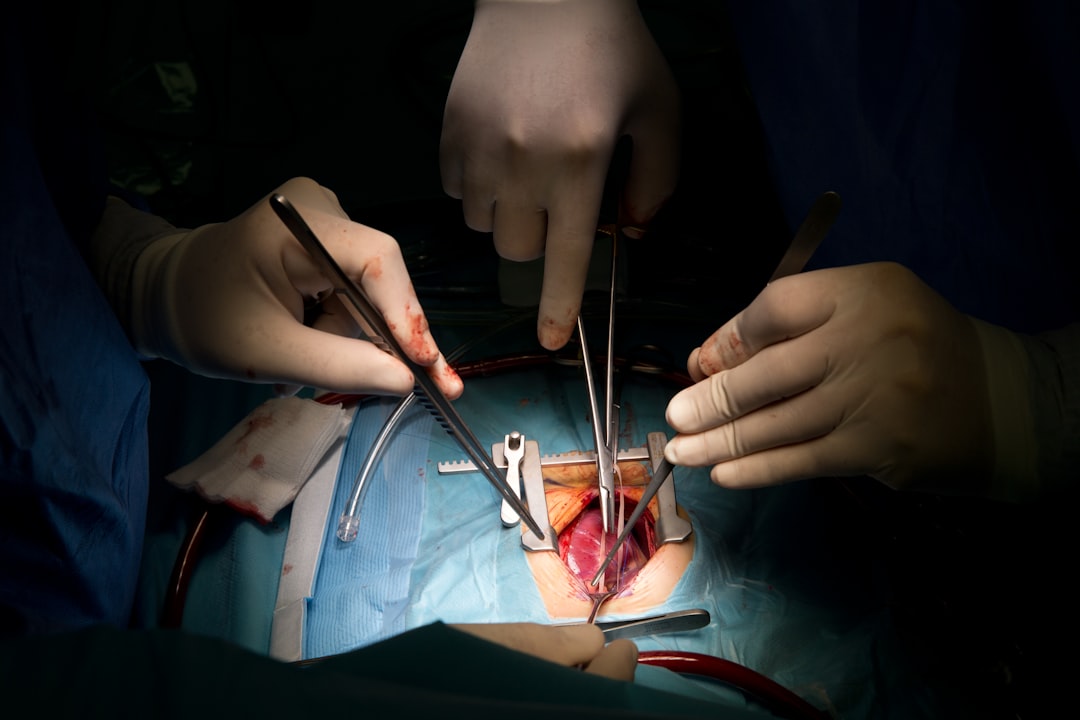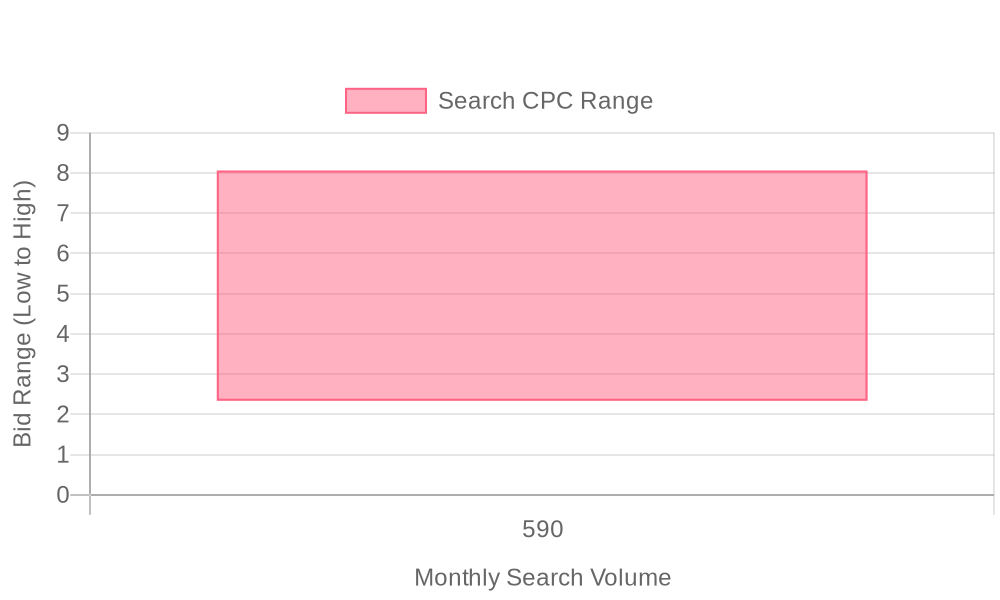
Supercharge your lead generation with a FREE Google Ads audit - no strings attached! See how you can generate more and higher quality leads
Get My Free Google Ads AuditFree consultation

No commitment
Supercharge your lead generation with a FREE LinkedIn Ads audit - no strings attached! See how you can generate more and higher quality leads
Get My Free Google Ads AuditFree consultation

No commitment
Supercharge your lead generation with a FREE Meta Ads audit - no strings attached! See how you can generate more and higher quality leads
Get My Free Google Ads AuditGet My Free LinkedIn Ads AuditGet My Free Meta Ads AuditFree consultation

No commitment
Supercharge your lead generation with a FREE Google Ads audit - no strings attached! See how you can generate more and higher quality leads
Get My Free Google Ads AuditFree consultation

No commitment
In today's rapidly evolving healthcare marketing landscape, businesses focused on organ repair services are faced with the challenge of capturing the attention of potential clients amidst high competition and numerous advertising channels. Modern solutions have alleviated some of these challenges by allowing businesses to efficiently target their audience. Google Ads stands out as a crucial tool in this ecosystem, playing a pivotal role in connecting service providers with individuals in need of specialized organ repair solutions. By strategically intercepting potential customers at the exact moment they are searching for relevant services, Google Ads bridges the gap between awareness and engagement, ultimately driving meaningful conversions. For organ repair services, this platform offers opportunities to address specific advertising challenges unique to this industry, including navigating strict regulatory standards, targeting niche demographics, and staying competitive in a sensitive and highly regulated field.

With emerging audience intelligence solutions, revenue teams can automatically detect organizations or individuals researching organ repair services, even when those users have not filled out a contact form. These technologies allow marketers to pinpoint which companies are demonstrating in-market intent, match them to CRM data, and activate custom Google Ads campaigns for each high-value segment. To explore more actionable plays for improving your workflows, visit our collection of marketing playbooks.
Automated workflows can sync live website engagement data to Google Ads, dynamically shifting budget toward accounts that demonstrate urgent intent. This real-time approach enables marketing and sales teams to prioritize outreach as soon as a hot prospect is detected, accelerating the sales process and boosting conversion rates for urgent repair requests. If you’re ready to streamline this process, get started for free with Sona.
Dynamic audience management tools keep segmentation up to date as prospects move through the funnel, ensuring that messaging evolves with each stage of the buyer journey. For a step-by-step approach to campaign optimization for restoration businesses, explore this guide to Google Ads for restoration companies. This granular approach to segmentation consistently outperforms broad targeting, increasing both engagement and lead quality for organ repair service providers.

Organ repair services operate in a highly specialized market where traditional outreach falls short of connecting with the right decision-makers. Precision digital advertising bridges this gap by capturing the attention of healthcare professionals and organizations actively searching for advanced repair and transplant solutions—learn how intent data can increase revenue by reaching those most likely to convert.
High-value, mission-critical procedures such as organ repair and transplant coordination require exact targeting to ensure that marketing efforts reach those in urgent need. With intent-driven Google Ads campaigns, marketers surface relevant solutions at the exact moment professionals are seeking them, supporting better patient outcomes and maximizing ROI.
When immediate intervention is necessary, visibility cannot lag behind demand. Well-structured campaigns prioritize rapid engagement, placing service providers in front of decision-makers during crisis moments and enabling swift response. This real-time presence is essential for healthcare marketers to satisfy urgent care requirements and streamline patient journeys.
Expanding organ repair services into new geographical markets brings unique challenges around credibility and awareness. Google Ads empowers marketers to efficiently introduce their offerings in unfamiliar regions, ensuring that expansion efforts are supported with targeted exposure and measurable local traction. By unifying insights across regions, teams can quickly identify where qualified demand is emerging and adapt campaigns accordingly. To see how digital targeting can drive new business, get started for free with Sona.

Ready to optimize your organ repair campaigns? Get started for free with Sona.

Growth in organ repair marketing hinges on reaching audiences that traditional channels often overlook. Specialized keyword targeting, focused on terms unique to pipe organ repair and restoration, connects with institutions and individuals actively seeking these specialized services. When these campaigns are mapped to broader content strategies, each interaction moves prospects closer to engagement, while the overall digital footprint expands into new, high-value territories.
Competitor gap analysis, powered by advanced technology, reveals untapped market segments and geographic pockets with little competition. By analyzing not just who is bidding on core organ repair terms but also which adjacent service areas are underserved, marketers can prioritize ad spend where it will yield the most incremental leads. Automated insights into search volume and competitor density allow for rapid adjustments in campaign focus, avoiding wasted impressions and maximizing share of voice.
Running industry-targeted ads on healthcare directories and music-specific forums extends reach where organic visibility may be limited. These channels attract decision-makers involved in organ maintenance contracts, facility management, and musical instrument preservation. Coupled with Google Ads, these placements create multiple touchpoints in the research journey, increasing the likelihood of capturing high-intent inquiries.
Retargeting further amplifies growth by delivering tailored resources, such as technical guides or restoration case study videos, to visitors who previously engaged but did not convert. This approach maintains brand relevance and builds trust through educational content, guiding prospects from initial awareness to action. With real-time audience enrichment, segments update automatically as leads progress in their buying journey, ensuring that remarketing efforts remain relevant and conversion-focused at every stage.
Visitor identification solutions now enable marketers to move beyond anonymous clicks, pinpointing specific institutions or companies engaging with organ repair content. This intelligence empowers outreach teams to prioritize follow-up and align messaging to the precise needs of each high-value account. When these insights sync into existing CRM and ad platforms, sales and marketing operate from a unified dataset, streamlining handoffs and accelerating deal cycles for organ repair service promotions. If you’re ready to transform your pipeline, get started for free with Sona.

Effective audience segmentation in organ repair services delivers measurable growth by targeting the right prospects at the right moment. Marketers who implement advanced segmentation strategies consistently outperform their peers in both lead quality and cost efficiency. For additional insights on segmentation, visit the Sona blog.

| Industry | Keyword | Monthly Search Volume | Competition Level | Low Bid | High Bid |
| Organ Repair Services | organ repair | 590 | LOW | 2.34 | 8.06 |
Developing a high-impact keyword strategy for organ repair services requires a nuanced approach that reflects the complex and sensitive nature of the healthcare industry. Marketers should build campaigns around terms that span urgent clinical needs, elective procedures, and informational queries to engage audiences at every stage of their journey. By targeting keywords such as "organ repair services near me," "kidney transplant cost," and "heart repair solutions," advertisers can connect with both high-intent searchers and those researching future care options. For additional insights on structuring campaigns in medical and repair niches, this guide to Google Ads for auto repair shops offers useful tactics that can be adapted for healthcare marketing.
Balancing a mix of high and low competition keywords is essential for effectively capturing attention across the marketing funnel. High-competition, high-intent phrases like "best organ repair clinic" may deliver faster conversions, while lower competition terms such as "organ repair process explained" attract those seeking education before making a decision. By mapping intent to specific keyword groups, teams can align campaigns with conversion goals and ensure that budget is allocated to the most promising segments. Explore our blog on marketing analytics for more strategies on keyword segmentation and funnel alignment.
Negative keywords play a crucial role in budget control and audience quality. Excluding terms unrelated to clinical care, such as "organ repair DIY" or searches for musical organs, helps eliminate irrelevant clicks and focuses investment on potential patients and referring providers. With advanced solutions, marketers can further refine targeting by identifying which companies and individuals are visiting their landing pages, then updating audience lists in real time as leads progress or disengage. This dynamic approach ensures that ad spend is consistently optimized toward the highest-value opportunities, streamlining acquisition for organ repair service providers. To experience these capabilities firsthand, get started for free with Sona.
Developing a winning keyword strategy for Google Ads for Organ Repair Services starts with deep research into the precise language your audience uses. Service-specific terms such as "transplant preparation," "organ compatibility assessment," and "post-operative organ care" should anchor your core keyword set. By layering in regional modifiers like city or neighborhood names, campaigns capture both urban and suburban intent, ensuring budget is spent on the most relevant local searches. For a comprehensive look at how repair services can leverage paid search, review this AutoVitals guide to Google Ads.
Long-tail keywords reflecting complex or urgent needs, such as "emergency organ transplant evaluation" or "specialist organ repair for rare conditions," further refine targeting and attract high-value leads. Applying a robust negative keyword list prevents wasted spend on irrelevant queries, like general medical repair or unrelated organics, preserving budget for those actively seeking specialized organ repair services. When these targeting tactics are managed through a platform that identifies website visitors and surfaces their company profiles, marketers can quickly pivot spend toward accounts with the highest likelihood of conversion, reducing friction across the funnel.
Effective ad copy for organ repair marketing revolves around clarity, credibility, and urgency. Headlines should address core industry needs such as "Certified Organ Repair Specialists" or "Rapid Organ Compatibility Testing," immediately signaling expertise. Integrating trust signals—including references to health certifications, accreditations, and verifiable case studies—helps establish authority and reduce perceived risk for prospective clients. Explore more advertising strategies with this step-by-step Google Ads guide for restoration companies.
Promoting timely offers, like complimentary consultations or introductory discounts for new patients, adds transactional urgency and boosts click-through rates. Ad extensions are essential: direct response call buttons allow for instant contact, while structured snippets and sitelinks showcase the full breadth of services available. When audience lists and engagement data are unified across channels, marketers can segment messaging dynamically, ensuring each prospect receives the most relevant offer and supporting content based on their funnel stage and prior interactions.
Landing pages must create a seamless experience from ad click to action, aligning message, search intent, and visual presentation. Every page should be fully responsive, providing fast load times and intuitive navigation on both desktop and mobile devices. Calls-to-action must remain clear and succinct, such as "Book a Compatibility Assessment" or "Request a Repair Consultation," guiding visitors toward the next step without ambiguity. See how other local repair businesses present their service offerings by visiting this repair services page.
To nurture trust, incorporate patient testimonials, before-and-after case studies, and a comprehensive FAQ section about organ repair procedures. Embedding rich content not only educates but also reassures visitors that they are dealing with a proven specialist. When engagement and visitor data are captured and linked to contact forms, sales teams gain instant visibility into which campaigns and keywords drive the most qualified leads, allowing for rapid iteration and improved conversion rates.
Optimization is a continuous process, anchored in both micro-conversion signals (such as time-on-page or partial form completions) and macro-conversion outcomes (such as booked appointments or completed procedures). Regular analysis of these touchpoints highlights where campaigns are excelling and where adjustments are required, ensuring every ad dollar is used efficiently. For a broader overview of SEM approaches that maximize lead generation, see this Search Engine Marketing overview.
Adopting smart bidding strategies like Target CPA enables marketers to automatically calibrate bids according to real-time conversion data, maximizing ROI while managing costs. Access to unified intent and engagement data accelerates this feedback loop, allowing teams to shift budget toward campaigns or audiences that deliver the greatest impact. When both online and offline events are tracked and attributed back to their source campaigns, marketers receive a full-funnel view, supporting granular optimizations that drive sustainable growth in organ repair service promotions. To streamline your entire campaign execution process, get started for free with Sona.
Professionals seeking to expand the reach of their organ repair services benefit from a multi-faceted marketing approach that aligns digital ad efforts with robust data integration and analytics. By leveraging insights from ad engagement, search trends, and CRM activity, marketers can capture demand at every stage and personalize outreach for greater impact.
Effective utilization of Google Ads for organ repair services hinges on expertly targeted keyword strategies that adapt to the diverse needs of patient demographics and the medical community. As companies refine creative campaigns to align with audience interests, they resolve missed opportunities and create seamless experiences for both service providers and seekers. Continuous optimization, powered by reliable analytics and seamless channel integration, ensures campaigns remain responsive and growth-focused, capturing intent signals across every touchpoint. Innovative digital advertising approaches offer a strategic edge, connecting healthcare partners and patients with leading organ repair solutions. To see how these strategies can work for you, get started for free with Sona.
In conclusion, effectively leveraging Google Ads for organ repair services can significantly enhance your visibility and attract potential customers in this specialized field. By understanding the unique challenges of advertising in the healthcare sector, adopting precise targeting strategies, and crafting compelling ad copy, you can elevate your service offerings to the forefront of potential clients' minds.
Throughout this discussion, we've explored the importance of keyword selection, ad extensions, and data-driven adjustments to optimize your campaigns. These strategies collectively ensure that your ads are not only seen by the right audience but also convert interest into action. By implementing these insights, you can overcome the hurdles of digital advertising and position your services for greater success.
Imagine the transformative impact on your business as you harness the full potential of Google Ads. With the right tools and strategies, you can reach a broader audience, increase engagement, and ultimately, drive more clients to your services. The journey toward enhanced visibility and growth begins with taking actionable steps today.
To further empower your advertising efforts, start for free to experience our platform and its capabilities today.
Best practices include targeting high-value prospects with precise audience segmentation, using timely follow-ups with automated engagement, and creating tailored campaigns for different decision-makers involved in organ repair projects.
Effectively target customers by leveraging audience intelligence solutions to identify high-value prospects, tailoring campaigns to specific audience segments, and using dynamic audience management tools to keep segmentation updated.
Budget allocation should focus on high-value leads by dynamically shifting budget towards accounts showing urgent intent and using smart bidding strategies like Target CPA to maximize ROI.
Use a mix of high and low competition keywords such as 'organ repair services near me,' 'emergency organ transplant evaluation,' and exclude irrelevant terms like 'organ repair DIY' to optimize targeting.
Measure success by analyzing both micro-conversion signals, like time-on-page, and macro-conversion outcomes, such as booked appointments, while regularly optimizing based on real-time engagement and conversion data.
Join results-focused teams combining Sona Platform automation with advanced Google Ads strategies to scale lead generation

Connect your existing CRM

Free Account Enrichment

No setup fees
No commitment required

Free consultation

Get a custom Google Ads roadmap for your business
Join results-focused teams combining Sona Platform automation with advanced Meta Ads strategies to scale lead generation

Connect your existing CRM

Free Account Enrichment

No setup fees
No commitment required

Free consultation

Get a custom Google Ads roadmap for your business
Join results-focused teams combining Sona Platform automation with advanced LinkedIn Ads strategies to scale lead generation

Connect your existing CRM

Free Account Enrichment

No setup fees
No commitment required

Free consultation

Get a custom Google Ads roadmap for your business
Join results-focused teams using Sona Platform automation to activate unified sales and marketing data, maximize ROI on marketing investments, and drive measurable growth

Connect your existing CRM

Free Account Enrichment

No setup fees
No commitment required

Free consultation

Get a custom Google Ads roadmap for your business
Over 500+ auto detailing businesses trust our platform to grow their revenue
Join results-focused teams using Sona Platform automation to activate unified sales and marketing data, maximize ROI on marketing investments, and drive measurable growth

Connect your existing CRM

Free Account Enrichment

No setup fees
No commitment required

Free consultation

Get a custom Google Ads roadmap for your business
Over 500+ auto detailing businesses trust our platform to grow their revenue
Join results-focused teams using Sona Platform automation to activate unified sales and marketing data, maximize ROI on marketing investments, and drive measurable growth

Connect your existing CRM

Free Account Enrichment

No setup fees
No commitment required

Free consultation

Get a custom Google Ads roadmap for your business
Over 500+ auto detailing businesses trust our platform to grow their revenue
Our team of experts can implement your Google Ads campaigns, then show you how Sona helps you manage exceptional campaign performance and sales.
Schedule your FREE 15-minute strategy sessionOur team of experts can implement your Meta Ads campaigns, then show you how Sona helps you manage exceptional campaign performance and sales.
Schedule your FREE 15-minute strategy sessionOur team of experts can implement your LinkedIn Ads campaigns, then show you how Sona helps you manage exceptional campaign performance and sales.
Schedule your FREE 15-minute strategy sessionOur team of experts can help improve your demand generation strategy, and can show you how advanced attribution and data activation can help you realize more opportunities and improve sales performance.
Schedule your FREE 30-minute strategy sessionOur team of experts can help improve your demand generation strategy, and can show you how advanced attribution and data activation can help you realize more opportunities and improve sales performance.
Schedule your FREE 30-minute strategy sessionOur team of experts can help improve your demand generation strategy, and can show you how advanced attribution and data activation can help you realize more opportunities and improve sales performance.
Schedule your FREE 30-minute strategy sessionOur team of experts can help improve your demand generation strategy, and can show you how advanced attribution and data activation can help you realize more opportunities and improve sales performance.
Schedule your FREE 30-minute strategy session





Launch campaigns that generate qualified leads in 30 days or less.
